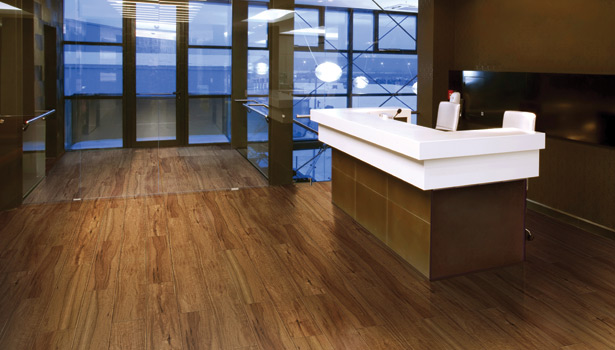The Future of LVT




But like other categories that achieve accelerated growth, these attributes soon become the “norm,” the baseline of what’s expected. Continued innovation on the aesthetic frontier will ultimately become the differentiator and the catalyst for the category’s continued growth.
High-Resolution (HD) printing technologies will push the envelope further as it relates to LVT’s ability to simulate or replicate natural products. This advancement is already underway, and it will continue to get better and better. Our industry utilizes the rotogravure printing process whereby the image or pattern is carved into a cylinder and, through a rotary-pressing process, the images are transferred to the decorative print-film.
This technology, in general, has improved over the years. Furthermore, the number of colors utilized can dramatically enhance the visual. For instance, basic wood-grain patterns may only utilize two-color printing technology, but stone or tile visuals may use up to five colors to provide for a vast array of shades and variances.
In the areas of embossing and texture, IRE (In-Register-Embossing) will become more and more sophisticated, whereby the texture on the surface of the floor will exactly match the printed image to make the floor look ultra-real. Surface treatments such as the use of ceramic bead particles integrated into a clear liquid-overlay on top of the wear layer will allow LVT to be offered in other textures, such as furniture-grade veneer-like finishes, while still delivering scuff resistance.
Edge details, often relegated to only a “square-edge” or a “micro-bevel,” will see more options in the eased or rounded arenas, which can be a nice enhancement to both stone/tile visuals as well as woodgrain planks. These “rounded-edges” provide more definition from plank to plank or tile to tile.
To take stone and tile visuals to another level, the incorporation of real grout has become popular. This really cements the illusion that the installed floor is not a simulation of a natural product; it becomes almost impossible to distinguish one from the other. We recently introduced a floating, groutable tile: the installer can float 16” x 16” tiles using our grip-strip system and, with an available spacer, leave a 3mm channel to accept grout. After the tile is laid, the installer simply grouts the floor like they would with a traditional ceramic product. The beauty of this system is related to both speed and aesthetics; a contractor can install and grout the product with very little subfloor preparation, and in a fraction of the time it would take compared to a true ceramic product.
Most of the focus has been on making LVT look more like wood, stone or tile, but the bar will truly be raised when these products begin to take advantage of their full capabilities. They will feature design elements that are not mimicking natural materials, but rather are developed with the intent of mixing color, pattern, prints and textures to create an entirely new look unique to the category. For instance, rather than replicate the appearance of wood, tile or stone, printed visuals can feature geometric patterns, abstract designs, and styles that create the illusion of texture found perhaps on linens or fabrics. In short, visuals that are out of the box and not simply renditions of natural flooring products with which we are already familiar.
Finally, while not necessarily design oriented, other performance attributes will become more important. Advancements to make the product quieter: from a sound-transmission standpoint (sound transmitted to the room below) and reflected sound (what is heard as the floor is walked upon). And while already a good choice for indoor air quality, e.g. it does not harbor dust and boasts low VOCs, LVT surface treatments that prevent mold, mildew or bacteria from growth will also become much more common as these attributes move beyond the healthcare segment and become a priority to residential end users.
Russ Rogg is president & CEO of Metroflor Corp.
(866) 882-4407
Looking for a reprint of this article?
From high-res PDFs to custom plaques, order your copy today!









